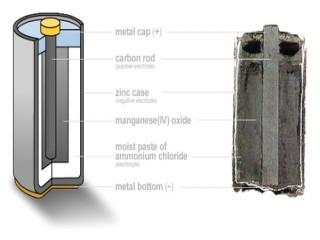
Carl Gassner biography
Date of birth : -
Date of death : -
Birthplace : Essen, Germany
Nationality : German
Category : Science and Technology
Last modified : 2010-05-06
Credited as : Scientist, Dry cell Battery, Zinc-carbon battery
11 votes so far
Dr. Gassner produced the first “dry” cell in 1888 with zinc as the container for the other elements as well as for the negative electrode. The electrolyte was absorbed in a porous material and the cell was sealed across the top. This cell was easy to handle and portable. It became the prototype for the dry battery industry. Dr. Carl Gassner, German scientist, that worked in Mentz is known for his invention of the first dry cell (battery).
In 1886 he issued a German patent (No. 37,758) for the first “dry” cell, which used zinc as its primary ingredient. He encased the cell chemicals in a sealed zinc container. Gassner’s battery was much like the carbon-zinc, general-purpose batteries on the market today.
Gassner also patented his invention in Austria, Belgium, England, France and Hungary in the same year. A U.S. patent was issued to Gassner in 1887 (No. 373,064). In America, by 1896, the Nation Carbide Company, later Union Carbide and Eveready, produced the first consumer dry cell battery. In addition to formulating the dry cell principle, Dr. Gassner was also the first researcher to add zinc chloride to the electrolyte. This reduced the wasteful corrosion of zinc when the cell was idle – adding considerably to the shelf life.
The first dry cell developed by Gassner consisted of an outer zinc can that served both as a container and as the negative electrode. The positive electrode, a carbon rod, was immersed in a manganese dioxide/carbon black mixture. It was separated from the zinc container by a folded paper sack, soaked in a solution of ammonium chloride which acted as the electrolyte. During use the zinc casing of the battery was gradually consumed by the chemical reaction. A bitumen seal prevented evaporation of water from the electrolyte and the ingression of oxygen.
















